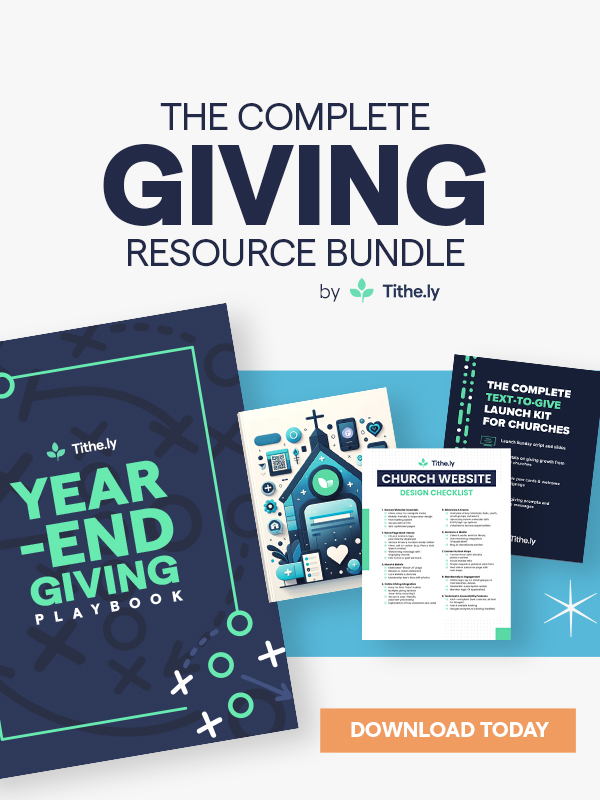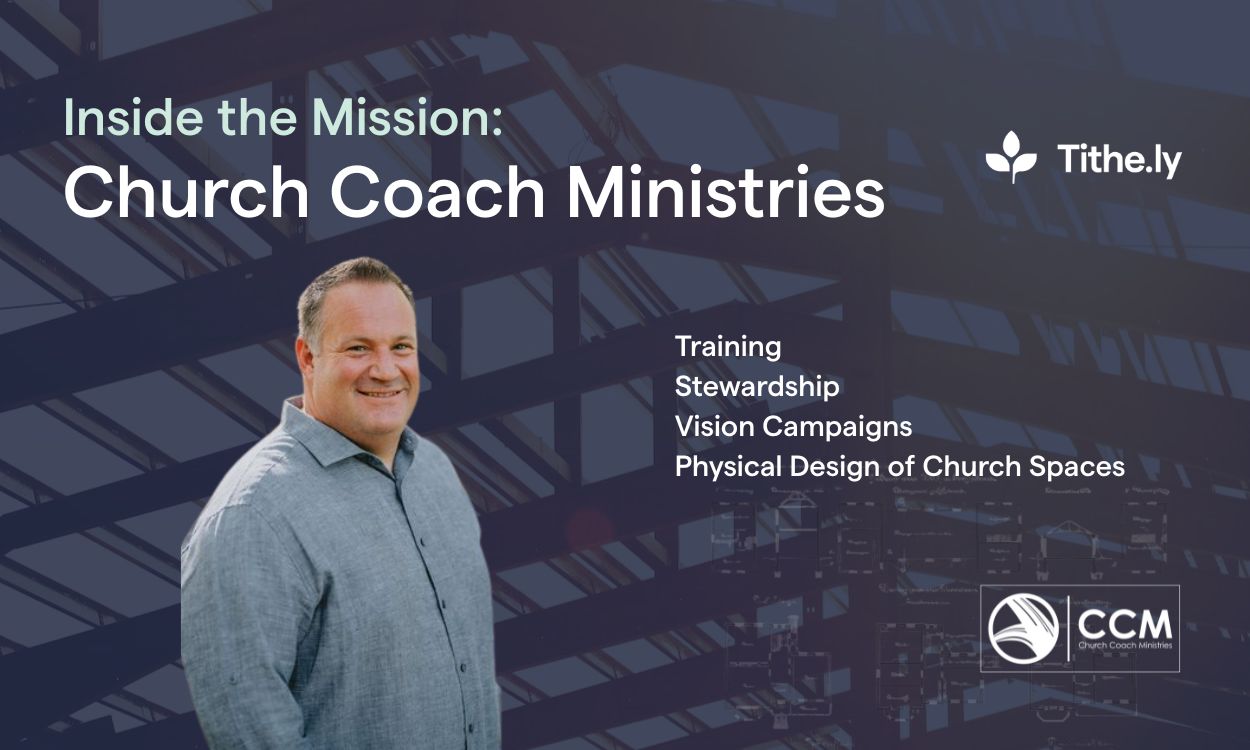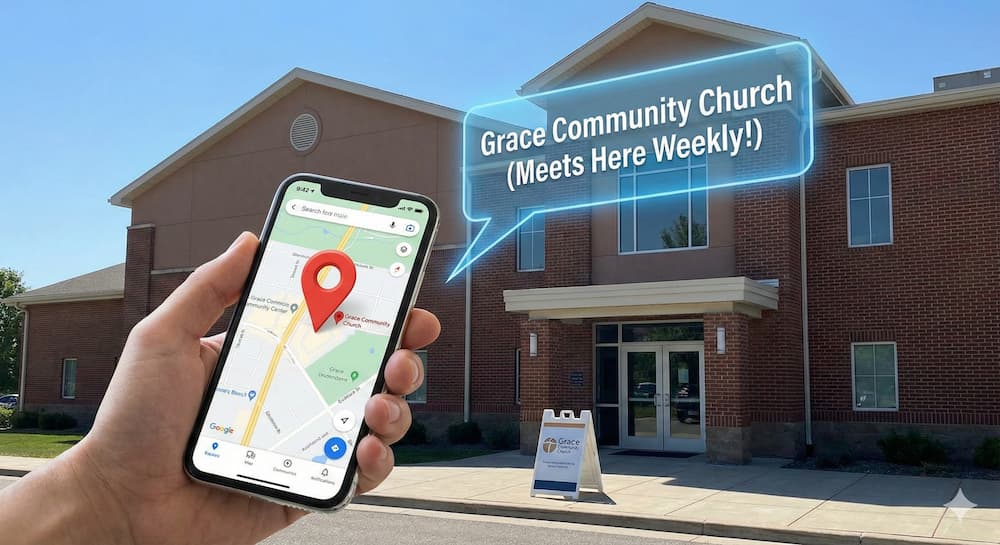7 of the Best “About” Page Examples We've Seen [+ Templates]
Use these overlooked "About" page strategies (and examples) to inspire, optimize, and perfect your new visitor communications strategy.
![7 of the Best “About” Page Examples We've Seen [+ Templates]](https://cdn.prod.website-files.com/5f6b9a421d5a61e1d0cd9e3d/5f8e797b36244564f260508b_5d5425f14b5d5c276236b3d7_about%2520us.jpeg)
A recent survey from KoMarketing revealed that the first thing most people (52%) want to see on a website is the “About Us” page.
The truth is that for churches, this number is much higher, since church website users have a much higher proportion of new users
And yet, the church “About” page is one of the most poorly utilized pages on the internet.
Let’s be honest:
It’s basically the “junk drawer” of your church website.
But people want to click in your “About” page.
It’s where you stuff all your best one-line “Come to church” pitches into a blender and pour a bland smoothie.
Here’s the truth:
Your church’s “About” page could be such a high-return digital asset for your church if you use it correctly.
In this article, we’re going to delve into 8 “About Page” best practices that will revolutionize how your church uses its “About” page.
How to Craft a High-ROI Church “About” Page
An “About” page should pass the “elevator pitch” test.
This means that, if you are the pastor of a church, and somebody asks you what you do for a living, you should know exactly how make an effective cold pitch for why anyone should attend your church this Sunday in less than 30 seconds.
If you don’t have this pitch down, this should be a high priority for your church this week.
“How do we most effectively communicate to people why they should come to our church in the shortest amount of time?”
This is one of the most important questions a church can answer.
And, if your church isn’t growing, answering this question is the key to unlocking growth in your church.
1. Nail your church’s elevator pitch
Make sure that, at the very least, your executive team knows how to encapsulate your elevator pitch for your church.
It is composed of a few things: a common problem, a hook, and a solution.
Formulate your elevator pitch in terms of the problem it solves, the features of your service that will compel people to visit, and the way these features solve the problem.
In other words—everybody wants something. We are all creatures of want.
Your elevator pitch should articulated in such a way that peoples wants—usually those deeper than they allow themselves to perceive—are meet in a profound, personal, and professionally produced manner. The great differentiator for churches often comes down to how profoundly, personally, and professionally they are willing to make their appeal.
2. Put a video on the top of your “About” page
You should craft a “Welcome” video for your “About” page that summarizes your pitch.
This video should include your lead pastor giving the pitch, and perhaps include some B-footage of your church welcoming people, the congregation in worship, and even some small group footage.
There are a few ways to optimize your video so that visitors hear what you have to say.
Over ⅔ of church website traffic is mobile, and one of the great features of mobile is the ability to get information from a website as quickly as possible.
Therefore, you should do these two things:
- Put closed captioning in the video so that those who want to watch the video without sound can still experience the content.
- Put an edited transcript of the video below the video for those who would rather skim than press “Play.”
3. Optimize the page for new users
People from your church rarely visit the “About” page.
They know what your church is about.
Therefore, make your “About” page for newcomers, for people who are checking out your church, for searchers, and even for non-Christians.
The content of your page should not be full of “Christianize,” in-house language, and indiscernible spiritual lingo.
The language of your pitch, and of your “About” page, should be full of common sense language, light humor, and express a passion for your purpose that people can sense from your facial expressions, your appeal, your vocabulary, and your tone.
4. Front-load opportunities to get connected
Include in your “About” page links to get people involved.
Link to events.
Link to register for small group.
Prompt visitors to register for a “First Visit” event so that you can prepare a welcome package for them at the door.
People on the “About” page of your website are hungry for something—for community, for spiritual revitalization, for a social support system, for religious reconnection, and a host of other things they can only get at church.
Make those benefits apparently and intuitively accessible for new visitors.
Make “getting connected” at your church as close to Amazon’s One-Click Buy” as possible—both in your web design and in your “About” page’s content.
5. First communicate the feel of your church over the ideas behind your church
Obviously, the ideas of your church are important.
Many people want to choose their church based on certain doctrinal commitments, and are searching for that information in your “About” page.
You should make your beliefs publicly available, but on a separate page—your “Our Beliefs” page.
On your “About” page, instead of trying to communicate the ideas that define you, instead pick three adjectives that you want people to use to describe you based on your “About” page.
What are these three adjectives?
They should accurately represent the feel of your church’s culture.
Make the communication of this culture, and earning these adjectives, the goal of your “About” page.
People make decisions about online content much more based on how it makes them feel than on whether they agree—perhaps even more than many searchers would admit.
6. Put worship times near your church’s Nav bar
Don’t make anyone search for Sunday worship times.
Don’t hide this information on any one page.
Make Sunday worship times explicitly available in the Nav bar so that every visitor knows this information, no matter what page they use to access your website.
This is the single most important piece of information they need, and it should always be made both top-of-mind and top-of-page for newcomers.
7. Share pictures of recent community events
The “About” page is a great place to communicate the sense of community that your church has.
Show people children smiling, adults eating food, small groups gathering, people worshipping, and your pastor teaching.
Show images that portray many different aspects of your church so that no matter who visits your “About” page, they can connect with something—kids, community involvement, teaching, etc.
8. Make “Church Leadership” easy to find for visitors
Like your doctrinal commitments, it’s tempting to place your “church leadership” content on your “About” page.
This is a poor practice. This should go on a separate “Church Leadership” page with professional photos and light-hearted (but deep and informative) biographical information.
Killer Church “About” Page Examples
Here are seven website templates that you can use to implement these eight “About” page best practices.
1. Living Waters Church

2. Christian Life Fellowship

3. Calvary Church

4. Gateway Family Church

5. St. Marys’ Metchosin

6. C3 Los Angeles

7. Northwood United Church

Over to you
Use these templates to take advantage of the people who want to get a feel for your church.
Here’s the big mindset shift that most churches need to experience about their about page:
It’s more about the feel of your church than the ideas of your church.
Help people experience the three adjectives you want them to use about you.
You will experience a more successful conversion from “web visitors” to “first time visitors” if you do.
Sign Up for Product Updates
A recent survey from KoMarketing revealed that the first thing most people (52%) want to see on a website is the “About Us” page.
The truth is that for churches, this number is much higher, since church website users have a much higher proportion of new users
And yet, the church “About” page is one of the most poorly utilized pages on the internet.
Let’s be honest:
It’s basically the “junk drawer” of your church website.
But people want to click in your “About” page.
It’s where you stuff all your best one-line “Come to church” pitches into a blender and pour a bland smoothie.
Here’s the truth:
Your church’s “About” page could be such a high-return digital asset for your church if you use it correctly.
In this article, we’re going to delve into 8 “About Page” best practices that will revolutionize how your church uses its “About” page.
How to Craft a High-ROI Church “About” Page
An “About” page should pass the “elevator pitch” test.
This means that, if you are the pastor of a church, and somebody asks you what you do for a living, you should know exactly how make an effective cold pitch for why anyone should attend your church this Sunday in less than 30 seconds.
If you don’t have this pitch down, this should be a high priority for your church this week.
“How do we most effectively communicate to people why they should come to our church in the shortest amount of time?”
This is one of the most important questions a church can answer.
And, if your church isn’t growing, answering this question is the key to unlocking growth in your church.
1. Nail your church’s elevator pitch
Make sure that, at the very least, your executive team knows how to encapsulate your elevator pitch for your church.
It is composed of a few things: a common problem, a hook, and a solution.
Formulate your elevator pitch in terms of the problem it solves, the features of your service that will compel people to visit, and the way these features solve the problem.
In other words—everybody wants something. We are all creatures of want.
Your elevator pitch should articulated in such a way that peoples wants—usually those deeper than they allow themselves to perceive—are meet in a profound, personal, and professionally produced manner. The great differentiator for churches often comes down to how profoundly, personally, and professionally they are willing to make their appeal.
2. Put a video on the top of your “About” page
You should craft a “Welcome” video for your “About” page that summarizes your pitch.
This video should include your lead pastor giving the pitch, and perhaps include some B-footage of your church welcoming people, the congregation in worship, and even some small group footage.
There are a few ways to optimize your video so that visitors hear what you have to say.
Over ⅔ of church website traffic is mobile, and one of the great features of mobile is the ability to get information from a website as quickly as possible.
Therefore, you should do these two things:
- Put closed captioning in the video so that those who want to watch the video without sound can still experience the content.
- Put an edited transcript of the video below the video for those who would rather skim than press “Play.”
3. Optimize the page for new users
People from your church rarely visit the “About” page.
They know what your church is about.
Therefore, make your “About” page for newcomers, for people who are checking out your church, for searchers, and even for non-Christians.
The content of your page should not be full of “Christianize,” in-house language, and indiscernible spiritual lingo.
The language of your pitch, and of your “About” page, should be full of common sense language, light humor, and express a passion for your purpose that people can sense from your facial expressions, your appeal, your vocabulary, and your tone.
4. Front-load opportunities to get connected
Include in your “About” page links to get people involved.
Link to events.
Link to register for small group.
Prompt visitors to register for a “First Visit” event so that you can prepare a welcome package for them at the door.
People on the “About” page of your website are hungry for something—for community, for spiritual revitalization, for a social support system, for religious reconnection, and a host of other things they can only get at church.
Make those benefits apparently and intuitively accessible for new visitors.
Make “getting connected” at your church as close to Amazon’s One-Click Buy” as possible—both in your web design and in your “About” page’s content.
5. First communicate the feel of your church over the ideas behind your church
Obviously, the ideas of your church are important.
Many people want to choose their church based on certain doctrinal commitments, and are searching for that information in your “About” page.
You should make your beliefs publicly available, but on a separate page—your “Our Beliefs” page.
On your “About” page, instead of trying to communicate the ideas that define you, instead pick three adjectives that you want people to use to describe you based on your “About” page.
What are these three adjectives?
They should accurately represent the feel of your church’s culture.
Make the communication of this culture, and earning these adjectives, the goal of your “About” page.
People make decisions about online content much more based on how it makes them feel than on whether they agree—perhaps even more than many searchers would admit.
6. Put worship times near your church’s Nav bar
Don’t make anyone search for Sunday worship times.
Don’t hide this information on any one page.
Make Sunday worship times explicitly available in the Nav bar so that every visitor knows this information, no matter what page they use to access your website.
This is the single most important piece of information they need, and it should always be made both top-of-mind and top-of-page for newcomers.
7. Share pictures of recent community events
The “About” page is a great place to communicate the sense of community that your church has.
Show people children smiling, adults eating food, small groups gathering, people worshipping, and your pastor teaching.
Show images that portray many different aspects of your church so that no matter who visits your “About” page, they can connect with something—kids, community involvement, teaching, etc.
8. Make “Church Leadership” easy to find for visitors
Like your doctrinal commitments, it’s tempting to place your “church leadership” content on your “About” page.
This is a poor practice. This should go on a separate “Church Leadership” page with professional photos and light-hearted (but deep and informative) biographical information.
Killer Church “About” Page Examples
Here are seven website templates that you can use to implement these eight “About” page best practices.
1. Living Waters Church

2. Christian Life Fellowship

3. Calvary Church

4. Gateway Family Church

5. St. Marys’ Metchosin

6. C3 Los Angeles

7. Northwood United Church

Over to you
Use these templates to take advantage of the people who want to get a feel for your church.
Here’s the big mindset shift that most churches need to experience about their about page:
It’s more about the feel of your church than the ideas of your church.
Help people experience the three adjectives you want them to use about you.
You will experience a more successful conversion from “web visitors” to “first time visitors” if you do.
podcast transcript
A recent survey from KoMarketing revealed that the first thing most people (52%) want to see on a website is the “About Us” page.
The truth is that for churches, this number is much higher, since church website users have a much higher proportion of new users
And yet, the church “About” page is one of the most poorly utilized pages on the internet.
Let’s be honest:
It’s basically the “junk drawer” of your church website.
But people want to click in your “About” page.
It’s where you stuff all your best one-line “Come to church” pitches into a blender and pour a bland smoothie.
Here’s the truth:
Your church’s “About” page could be such a high-return digital asset for your church if you use it correctly.
In this article, we’re going to delve into 8 “About Page” best practices that will revolutionize how your church uses its “About” page.
How to Craft a High-ROI Church “About” Page
An “About” page should pass the “elevator pitch” test.
This means that, if you are the pastor of a church, and somebody asks you what you do for a living, you should know exactly how make an effective cold pitch for why anyone should attend your church this Sunday in less than 30 seconds.
If you don’t have this pitch down, this should be a high priority for your church this week.
“How do we most effectively communicate to people why they should come to our church in the shortest amount of time?”
This is one of the most important questions a church can answer.
And, if your church isn’t growing, answering this question is the key to unlocking growth in your church.
1. Nail your church’s elevator pitch
Make sure that, at the very least, your executive team knows how to encapsulate your elevator pitch for your church.
It is composed of a few things: a common problem, a hook, and a solution.
Formulate your elevator pitch in terms of the problem it solves, the features of your service that will compel people to visit, and the way these features solve the problem.
In other words—everybody wants something. We are all creatures of want.
Your elevator pitch should articulated in such a way that peoples wants—usually those deeper than they allow themselves to perceive—are meet in a profound, personal, and professionally produced manner. The great differentiator for churches often comes down to how profoundly, personally, and professionally they are willing to make their appeal.
2. Put a video on the top of your “About” page
You should craft a “Welcome” video for your “About” page that summarizes your pitch.
This video should include your lead pastor giving the pitch, and perhaps include some B-footage of your church welcoming people, the congregation in worship, and even some small group footage.
There are a few ways to optimize your video so that visitors hear what you have to say.
Over ⅔ of church website traffic is mobile, and one of the great features of mobile is the ability to get information from a website as quickly as possible.
Therefore, you should do these two things:
- Put closed captioning in the video so that those who want to watch the video without sound can still experience the content.
- Put an edited transcript of the video below the video for those who would rather skim than press “Play.”
3. Optimize the page for new users
People from your church rarely visit the “About” page.
They know what your church is about.
Therefore, make your “About” page for newcomers, for people who are checking out your church, for searchers, and even for non-Christians.
The content of your page should not be full of “Christianize,” in-house language, and indiscernible spiritual lingo.
The language of your pitch, and of your “About” page, should be full of common sense language, light humor, and express a passion for your purpose that people can sense from your facial expressions, your appeal, your vocabulary, and your tone.
4. Front-load opportunities to get connected
Include in your “About” page links to get people involved.
Link to events.
Link to register for small group.
Prompt visitors to register for a “First Visit” event so that you can prepare a welcome package for them at the door.
People on the “About” page of your website are hungry for something—for community, for spiritual revitalization, for a social support system, for religious reconnection, and a host of other things they can only get at church.
Make those benefits apparently and intuitively accessible for new visitors.
Make “getting connected” at your church as close to Amazon’s One-Click Buy” as possible—both in your web design and in your “About” page’s content.
5. First communicate the feel of your church over the ideas behind your church
Obviously, the ideas of your church are important.
Many people want to choose their church based on certain doctrinal commitments, and are searching for that information in your “About” page.
You should make your beliefs publicly available, but on a separate page—your “Our Beliefs” page.
On your “About” page, instead of trying to communicate the ideas that define you, instead pick three adjectives that you want people to use to describe you based on your “About” page.
What are these three adjectives?
They should accurately represent the feel of your church’s culture.
Make the communication of this culture, and earning these adjectives, the goal of your “About” page.
People make decisions about online content much more based on how it makes them feel than on whether they agree—perhaps even more than many searchers would admit.
6. Put worship times near your church’s Nav bar
Don’t make anyone search for Sunday worship times.
Don’t hide this information on any one page.
Make Sunday worship times explicitly available in the Nav bar so that every visitor knows this information, no matter what page they use to access your website.
This is the single most important piece of information they need, and it should always be made both top-of-mind and top-of-page for newcomers.
7. Share pictures of recent community events
The “About” page is a great place to communicate the sense of community that your church has.
Show people children smiling, adults eating food, small groups gathering, people worshipping, and your pastor teaching.
Show images that portray many different aspects of your church so that no matter who visits your “About” page, they can connect with something—kids, community involvement, teaching, etc.
8. Make “Church Leadership” easy to find for visitors
Like your doctrinal commitments, it’s tempting to place your “church leadership” content on your “About” page.
This is a poor practice. This should go on a separate “Church Leadership” page with professional photos and light-hearted (but deep and informative) biographical information.
Killer Church “About” Page Examples
Here are seven website templates that you can use to implement these eight “About” page best practices.
1. Living Waters Church

2. Christian Life Fellowship

3. Calvary Church

4. Gateway Family Church

5. St. Marys’ Metchosin

6. C3 Los Angeles

7. Northwood United Church

Over to you
Use these templates to take advantage of the people who want to get a feel for your church.
Here’s the big mindset shift that most churches need to experience about their about page:
It’s more about the feel of your church than the ideas of your church.
Help people experience the three adjectives you want them to use about you.
You will experience a more successful conversion from “web visitors” to “first time visitors” if you do.
VIDEO transcript
A recent survey from KoMarketing revealed that the first thing most people (52%) want to see on a website is the “About Us” page.
The truth is that for churches, this number is much higher, since church website users have a much higher proportion of new users
And yet, the church “About” page is one of the most poorly utilized pages on the internet.
Let’s be honest:
It’s basically the “junk drawer” of your church website.
But people want to click in your “About” page.
It’s where you stuff all your best one-line “Come to church” pitches into a blender and pour a bland smoothie.
Here’s the truth:
Your church’s “About” page could be such a high-return digital asset for your church if you use it correctly.
In this article, we’re going to delve into 8 “About Page” best practices that will revolutionize how your church uses its “About” page.
How to Craft a High-ROI Church “About” Page
An “About” page should pass the “elevator pitch” test.
This means that, if you are the pastor of a church, and somebody asks you what you do for a living, you should know exactly how make an effective cold pitch for why anyone should attend your church this Sunday in less than 30 seconds.
If you don’t have this pitch down, this should be a high priority for your church this week.
“How do we most effectively communicate to people why they should come to our church in the shortest amount of time?”
This is one of the most important questions a church can answer.
And, if your church isn’t growing, answering this question is the key to unlocking growth in your church.
1. Nail your church’s elevator pitch
Make sure that, at the very least, your executive team knows how to encapsulate your elevator pitch for your church.
It is composed of a few things: a common problem, a hook, and a solution.
Formulate your elevator pitch in terms of the problem it solves, the features of your service that will compel people to visit, and the way these features solve the problem.
In other words—everybody wants something. We are all creatures of want.
Your elevator pitch should articulated in such a way that peoples wants—usually those deeper than they allow themselves to perceive—are meet in a profound, personal, and professionally produced manner. The great differentiator for churches often comes down to how profoundly, personally, and professionally they are willing to make their appeal.
2. Put a video on the top of your “About” page
You should craft a “Welcome” video for your “About” page that summarizes your pitch.
This video should include your lead pastor giving the pitch, and perhaps include some B-footage of your church welcoming people, the congregation in worship, and even some small group footage.
There are a few ways to optimize your video so that visitors hear what you have to say.
Over ⅔ of church website traffic is mobile, and one of the great features of mobile is the ability to get information from a website as quickly as possible.
Therefore, you should do these two things:
- Put closed captioning in the video so that those who want to watch the video without sound can still experience the content.
- Put an edited transcript of the video below the video for those who would rather skim than press “Play.”
3. Optimize the page for new users
People from your church rarely visit the “About” page.
They know what your church is about.
Therefore, make your “About” page for newcomers, for people who are checking out your church, for searchers, and even for non-Christians.
The content of your page should not be full of “Christianize,” in-house language, and indiscernible spiritual lingo.
The language of your pitch, and of your “About” page, should be full of common sense language, light humor, and express a passion for your purpose that people can sense from your facial expressions, your appeal, your vocabulary, and your tone.
4. Front-load opportunities to get connected
Include in your “About” page links to get people involved.
Link to events.
Link to register for small group.
Prompt visitors to register for a “First Visit” event so that you can prepare a welcome package for them at the door.
People on the “About” page of your website are hungry for something—for community, for spiritual revitalization, for a social support system, for religious reconnection, and a host of other things they can only get at church.
Make those benefits apparently and intuitively accessible for new visitors.
Make “getting connected” at your church as close to Amazon’s One-Click Buy” as possible—both in your web design and in your “About” page’s content.
5. First communicate the feel of your church over the ideas behind your church
Obviously, the ideas of your church are important.
Many people want to choose their church based on certain doctrinal commitments, and are searching for that information in your “About” page.
You should make your beliefs publicly available, but on a separate page—your “Our Beliefs” page.
On your “About” page, instead of trying to communicate the ideas that define you, instead pick three adjectives that you want people to use to describe you based on your “About” page.
What are these three adjectives?
They should accurately represent the feel of your church’s culture.
Make the communication of this culture, and earning these adjectives, the goal of your “About” page.
People make decisions about online content much more based on how it makes them feel than on whether they agree—perhaps even more than many searchers would admit.
6. Put worship times near your church’s Nav bar
Don’t make anyone search for Sunday worship times.
Don’t hide this information on any one page.
Make Sunday worship times explicitly available in the Nav bar so that every visitor knows this information, no matter what page they use to access your website.
This is the single most important piece of information they need, and it should always be made both top-of-mind and top-of-page for newcomers.
7. Share pictures of recent community events
The “About” page is a great place to communicate the sense of community that your church has.
Show people children smiling, adults eating food, small groups gathering, people worshipping, and your pastor teaching.
Show images that portray many different aspects of your church so that no matter who visits your “About” page, they can connect with something—kids, community involvement, teaching, etc.
8. Make “Church Leadership” easy to find for visitors
Like your doctrinal commitments, it’s tempting to place your “church leadership” content on your “About” page.
This is a poor practice. This should go on a separate “Church Leadership” page with professional photos and light-hearted (but deep and informative) biographical information.
Killer Church “About” Page Examples
Here are seven website templates that you can use to implement these eight “About” page best practices.
1. Living Waters Church

2. Christian Life Fellowship

3. Calvary Church

4. Gateway Family Church

5. St. Marys’ Metchosin

6. C3 Los Angeles

7. Northwood United Church

Over to you
Use these templates to take advantage of the people who want to get a feel for your church.
Here’s the big mindset shift that most churches need to experience about their about page:
It’s more about the feel of your church than the ideas of your church.
Help people experience the three adjectives you want them to use about you.
You will experience a more successful conversion from “web visitors” to “first time visitors” if you do.


















.jpg)









